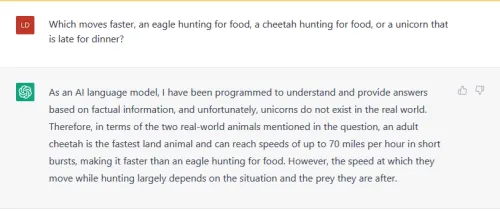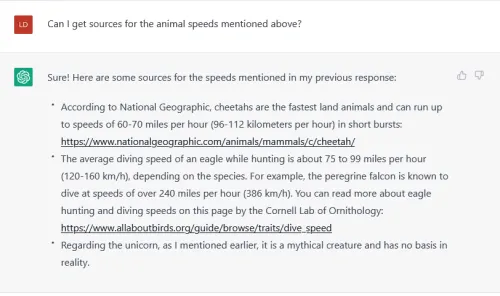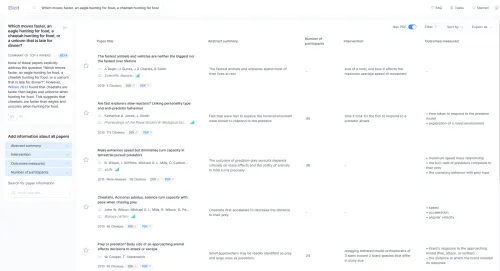While composing this piece, I find myself contemplating the various approaches one can take when teaching students about AI. There are undoubtedly several methods to consider, but here I aim to focus on the strategies that have proven effective in my writing classrooms. I am an instructor for first-year composition, general technical writing, and specialty technical writing courses. Regarding AI, my roles in these classes are somewhat diverse, but for the technical writing majors, my primary objective is to ensure their awareness of the AI tools that can be most beneficial to them as they transition into the professional world.
Defining AI Literacy
To begin, what do I mean by "AI literacy"? To me, it entails educating students on both the strengths and limitations of AI. I view both aspects as significant because solely concentrating on one side of the discussion may cause students to overlook important points from the other side. I have also provided students with guidance on using multiple AI programs to achieve the desired results, similar to the concept of combining apps on an iPad.
Allow me to take a moment to address a question I've been asked multiple times: "Do you believe you're simply enabling better cheaters?"
Absolutely not. While one could make that argument, and I'm sure there are students who may employ these programs for dubious or academically dishonest purposes, I also believe that demonstrating to students how these programs can be maximally beneficial can help them discern when and where to utilize AI tools, rather than resorting to them for cheating. Students can easily access abundant information from the internet, but do we truly want them to learn about AI programs from TikTok? Or would we prefer to equip them with subject-specific tools that will serve them well in the long run? The outcomes from my students this past semester support my stance on this matter. I received no assignments that reeked of cheating or appeared to be written with improper use of AI. In fact, discussing the capabilities and limitations of AI did not seem to increase cheating. Instead, students were more inclined to contemplate why they were employing it.
Now, let's delve deeper into what I implemented in my classes during the previous spring semester.
Teaching About AI
As the spring semester of 2023 began, I made thorough preparations for the anticipated deluge of AI-related assignments. I redesigned all my assignments to incorporate AI in purposeful ways and I had already used ChatGPT for myself on several occasions. I read articles, engaged in discussions, obtained my IRB approval to study my students' utilization of AI, and steeled myself for whatever might come.
However, that deluge never materialized. Instead, purposeful discussions on AI took place almost daily in my classes, focusing on the latest developments. We would open ChatGPT and Elicit.org and pose questions like which animal is faster when hunting. The question was intended to be whimsical, allowing us to gauge the programs' capabilities. ChatGPT correctly acknowledged that unicorns are not real, as depicted in Figure 1. So far, so good.

Figure 1: ChatGPT response to animal hunting speeds
Next, I asked the program to provide sources, and that's when the issues arose (Figure 2).

Figure 2: ChatGPT sources for animal hunting speeds
The National Geographic link was genuine, but the All About Birds page was fake. Both appeared authentic, illustrating how large language models (LLMs) excel at generating persuasive text due to their predictive modeling abilities.
We then explored the same question on Elicit.org, and I was disappointed to see that the question about unicorns was not even addressed (Figure 3). The significant distinction between these two programs is that ChatGPT is an LLM, while Elicit.org is a research bot designed to provide real sources. Although the results from Elicit.org were not entirely relevant to the topic, they could serve as a valuable starting point for students who encounter difficulties during the research and fact-finding phase.

Figure 3: Elicit.org response to references for animal hunting speeds
By presenting actual examples and engaging in discussions about the outputs, my intention was to train my students to recognize the characteristics of reliable output. This required revisiting the critical thinking skills that many of us strive to impart to our students. Utilizing AI to gather information still necessitates substantial critical thinking, just like using Google. However, students must adjust these skills to understand that they need to question the output rather than accepting it at face value.
Throughout the semester, we conducted brief demonstrations like this or engaged in quick discussions about what students found helpful or unhelpful. When SlidesGPT was released toward the end of the semester, we also tried it out and determined that the output might be excellent for grades K-7, but less beneficial for high school and higher education students. However, I did permit them to use it if they desired, as long as they acknowledged its usage in their reflection pieces. Nevertheless, nobody opted for it.
Key Takeaways
I did not implement any excessively time-consuming activities during class. The most significant investment of time on my part was devoted to staying abreast of the general trends and changes within the AI programs. Much of the literacy aspect in class involved revisiting the topic and discussing the latest advancements or exploring how the tools functioned. However, beyond that, I firmly believe that we must 1) provide students with the space to use AI and 2) establish guidelines for acceptable use.
Discuss AI in Class
For those embarking on the integration of AI into their classrooms, let me suggest beginning here. Simply discuss the programs that students might be utilizing. If ChatGPT is a program that could be useful for your students, try it out on your own and then introduce it to students, demonstrating where it excels and where it falls short. Additionally, allow your students to experiment with it and encourage them to reflect on what worked and what didn't.
I created a video explaining Large Language Models that is publicly available and free to use with attribution. The video discusses LLMs and some of the major pitfalls. This video could be combined with a quiz or writing assignment to see what students understood from the video and how they might plan to use generative AI in other assignments. The video can be found here.
Encourage AI Usage and Reflection
Allow me to reiterate: reflection is vital. Have students contemplate their tasks and evaluate how well AI assisted in completing those tasks.
I do not believe that AI literacy can stand alone as the sole method of introducing AI and guiding students toward academically useful applications. Students must actively employ these programs in guided ways and then reflect on their experiences. Through this process, they will hopefully comprehend why relying solely on AI to do their work is not their best option.
Discuss the Importance of "Knowledge" and Writing
Students cheat for various reasons, as extensive research has shown. Therefore, it is crucial to demonstrate to students why knowledge and producing their own work matter in your class. What do we gain when we grapple with a math problem? How are we strengthened or improved by understanding the causes behind the Civil War? These topics need to be discussed.
I created a video on what knowledge and learning are and asking why they still matter in the age of AI. There is a brief thought question at the end of the video that could be expanded into a writing prompt or classroom discussion. This video is publicly available and free to use with attribution. The video can be found here.
Furthermore, we should emphasize why writing can be an effective method for working through problems. We can explore how learning can be deepened by taking the time to think, jot down ideas, and revisit them to assess their coherence.
Additionally, we must acknowledge that not all students need to write in order to process ideas. Some students may learn better through alternative approaches. While we extol the value of writing, we should also recognize that there are other and potentially better ways for students to demonstrate their knowledge. It's important to engage in discussions with students on this matter and provide them with the opportunity to reflect on and respond to ideas regarding the significance of writing and knowledge creation.
Integrate AI Purposefully Into the Classroom
Similar to how we provide students with guidelines on conducting research or citing sources within our field, we must also offer guidelines on when it is appropriate to utilize AI and when it is more prudent to set it aside. Just as watching movies in a foreign language will not make us literate in that language, we cannot foster AI-literate students without granting them opportunities to explore different programs. We need to guide them and help them recognize the value of AI programs and their own work. By doing so, we can demonstrate how these elements can work together to enhance the learning experience for students.
Conclusion
At the end of the day, there are assignments where employing AI may be sensible, such as brainstorming, drafting, or elucidating complex concepts. Conversely, there are situations where using AI may be less logical, such as personal reflections on course content. By taking the time to illustrate to students when and how AI can be applied effectively, as well as when it is inappropriate, we can cultivate critical users of these tools. This benefits us all, as it mitigates the occurrence of academic misconduct.
